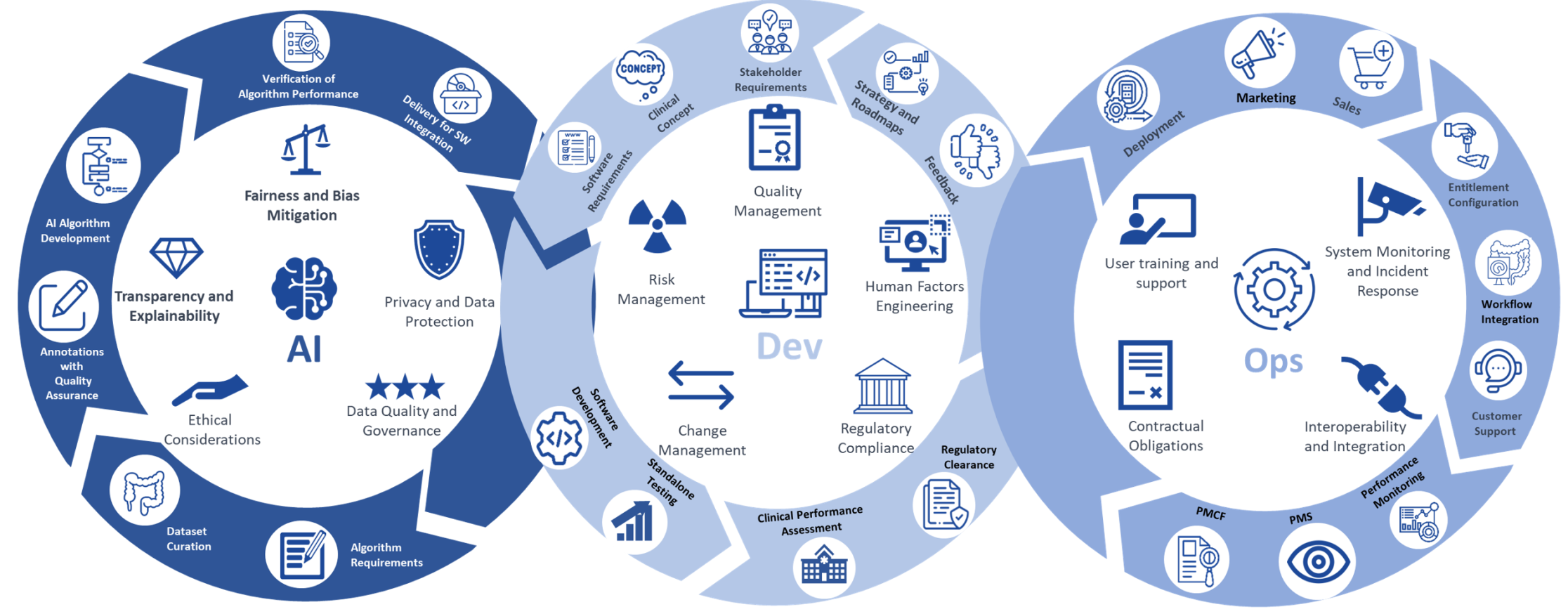The integration of Artificial Intelligence (AI) in healthcare has the potential to revolutionize the industry, offering innovative solutions that improve patient outcomes, streamline operations, and enhance the quality of care. Developing AI-based health solutions involves a complex process that includes identifying specific healthcare needs, collecting and preparing data, designing and training algorithms, validating models, and deploying solutions effectively. This article provides a comprehensive overview of the key steps involved in developing AI-based health solutions, from conceptualization to implementation.
Identifying Healthcare Needs and Use Cases
The first step in developing AI-based health solutions is to identify the specific healthcare needs and use cases that the solution aims to address. This involves engaging with healthcare professionals, stakeholders, and patients to understand the challenges and opportunities within the healthcare system. Whether the goal is to improve diagnostic accuracy, optimize treatment plans, enhance patient monitoring, or streamline administrative tasks, clearly defining the problem and understanding the target audience are crucial for guiding the development process.
For example, if the objective is to develop an AI-based tool for diagnosing medical images, the use case might involve identifying specific conditions, such as tumors or fractures, and understanding the challenges faced by radiologists in accurately interpreting these images. By focusing on a well-defined use case, developers can ensure that their AI solution addresses a real and pressing need within the healthcare sector.
Data Collection and Preparation
Data is the foundation of any AI-based health solution. Collecting and preparing high-quality data is essential for training and validating AI algorithms. This process involves gathering relevant datasets, such as medical records, imaging data, patient demographics, and clinical outcomes, while ensuring that the data is comprehensive, accurate, and representative of the target population.
Data preparation also involves cleaning and preprocessing the data to address issues such as missing values, inconsistencies, and noise. For healthcare data, this may include anonymizing patient information to protect privacy and comply with regulations such as HIPAA (Health Insurance Portability and Accountability Act) in the United States or GDPR (General Data Protection Regulation) in the European Union. Proper data preparation ensures that the AI algorithms are trained on reliable data, leading to more accurate and generalizable results.
Designing and Training AI Algorithms
Once the data is collected and prepared, the next step is to design and train AI algorithms. This involves selecting appropriate machine learning models and techniques based on the nature of the problem and the type of data available. For instance, deep learning models are often used for image analysis tasks, while natural language processing techniques may be applied to analyze text data from medical records.
Training the AI algorithms involves feeding the prepared data into the models and using various techniques to optimize their performance. This process includes splitting the data into training, validation, and test sets to ensure that the models are not overfitting and can generalize well to new, unseen data. During training, developers adjust parameters and hyperparameters to improve the model’s accuracy and effectiveness.
Validating and Testing the Models
Validation and testing are critical steps in developing AI-based health solutions to ensure that the models perform reliably and accurately in real-world scenarios. Validation involves assessing the performance of the AI models using the validation dataset to fine-tune and optimize their parameters. This step helps to identify potential issues and make necessary adjustments before deploying the models.
Testing involves evaluating the models on the test dataset to gauge their performance and generalizability. It is essential to assess metrics such as accuracy, sensitivity, specificity, and area under the curve (AUC) to determine how well the models perform in various conditions. Additionally, conducting pilot studies or clinical trials can provide valuable insights into how the AI solution performs in actual healthcare settings and how it impacts patient care.
Deployment and Integration
Deploying and integrating AI-based health solutions into existing healthcare systems is a crucial phase that requires careful planning and execution. Successful deployment involves ensuring that the AI solution is user-friendly, interoperable with other healthcare technologies, and seamlessly integrated into clinical workflows. Training healthcare professionals on how to use the AI tools effectively is also essential to ensure smooth adoption and utilization.
Integration involves collaborating with healthcare providers, IT departments, and regulatory bodies to ensure that the AI solution complies with relevant standards and regulations. It is important to address any technical, operational, and ethical challenges that may arise during deployment, such as ensuring data security and addressing potential biases in the AI algorithms.
Monitoring and Continuous Improvement
Once deployed, continuous monitoring and improvement are essential to maintain the effectiveness and relevance of AI-based health solutions. Regular monitoring involves tracking the performance of the AI models, collecting feedback from users, and identifying any issues or areas for improvement. This ongoing process ensures that the AI solution continues to meet the needs of healthcare providers and patients.
Continuous improvement involves updating the AI models and algorithms based on new data, advancements in technology, and feedback from users. This iterative process helps to refine and enhance the AI solution, ensuring that it remains accurate, effective, and aligned with evolving healthcare needs.
Addressing Ethical and Regulatory Considerations
Developing AI-based health solutions also requires addressing ethical and regulatory considerations. Ensuring patient privacy, data security, and compliance with regulations are paramount to maintaining trust and credibility. Ethical considerations include addressing potential biases in AI algorithms, ensuring transparency in decision-making processes, and providing explanations for AI-driven recommendations.
Collaboration with regulatory bodies and adherence to guidelines and standards are essential for ensuring that AI solutions are safe, effective, and ethically sound. Engaging with stakeholders, including patients and healthcare professionals, can help address concerns and ensure that the AI solution is developed and implemented in a manner that prioritizes patient welfare and ethical standards.
Conclusion
Developing AI-based health solutions involves a multi-faceted process that includes identifying healthcare needs, collecting and preparing data, designing and training algorithms, validating models, deploying solutions, and continuously monitoring and improving their performance. By following these steps and addressing ethical and regulatory considerations, developers can create innovative AI solutions that enhance patient care, streamline healthcare operations, and contribute to the advancement of the healthcare industry. As AI technology continues to evolve, ongoing research and collaboration will be crucial for developing effective and impactful health solutions that meet the needs of patients and healthcare providers alike.




